How to Access the Deep Web
Method 1 of 2:
Accessing the Deep Web
-
 Understand what Deep Web data actually is. Deep Web data is any online information which isn't indexed by a search engine (e.g., Google). This means that Deep Web information must be found by opening its source and searching for it there rather than by doing a quick Google search.[1]
Understand what Deep Web data actually is. Deep Web data is any online information which isn't indexed by a search engine (e.g., Google). This means that Deep Web information must be found by opening its source and searching for it there rather than by doing a quick Google search.[1]- Common examples of the Deep Web in everyday life include things like university library archives, results found within travel sites, and so on.
- Deep Web data usually isn't illegal, and is often linked to things like reputable research and library sources.
- The Deep Web is radically different than the Dark Web, which is often used to conduct illicit or anonymous activity.
-
 Know how search engines find results. When you search for a word or phrase in a search engine like Google, the search engine "crawls" through the Internet to find surface-level results.[2]
Know how search engines find results. When you search for a word or phrase in a search engine like Google, the search engine "crawls" through the Internet to find surface-level results.[2]- Since Deep Web content is never part of this surface layer, you can't find Deep Web content by using a traditional search engine.
-
 Use Firefox. As a precaution, using the Firefox browser will prevent your browsing history from being tracked. This both prevents retroactive searches from interfering with your access to Deep Web materials and ensures a degree of privacy not found in other browsers.[3]
Use Firefox. As a precaution, using the Firefox browser will prevent your browsing history from being tracked. This both prevents retroactive searches from interfering with your access to Deep Web materials and ensures a degree of privacy not found in other browsers.[3]- As with any browser, your Internet Service Provider (ISP) will still be able to see your browsing activity if they look for it.
-
 Use a website's dedicated search engine. Many websites have search engines built into them; these search engines are necessary in order to find results not listed on the surface web.
Use a website's dedicated search engine. Many websites have search engines built into them; these search engines are necessary in order to find results not listed on the surface web.- An example of this is Facebook's built-in search engine. You can use Facebook's search bar to find users, pages, and other items that you can't find with Google or similar.
- Another example includes the search bar found on academic research websites or archives. Again, these resources often aren't discoverable without the aid of the related search bar.
-
 Try using DuckDuckGo. DuckDuckGo, found at https://duckduckgo.com/, is a private search engine which can index both surface-level web results and Deep Web resources. While unlikely, you may be able to find a few Deep Web results here.
Try using DuckDuckGo. DuckDuckGo, found at https://duckduckgo.com/, is a private search engine which can index both surface-level web results and Deep Web resources. While unlikely, you may be able to find a few Deep Web results here.- The main disadvantage to using DuckDuckGo is that popular surface-level web results are more likely to show up than are the less-traveled Deep Web results.
- You can try to find Deep Web results through DuckDuckGo by browsing to the final search result pages.
-
 Locate a specialized database. If you want to search a specific type of database (e.g., a journalism-oriented one), do the following:
Locate a specialized database. If you want to search a specific type of database (e.g., a journalism-oriented one), do the following:- Go to http://www.searchengineguide.com/searchengines.html
- Select a category of search engine (e.g., Architecture).
- Select a subcategory if prompted.
- Select a database from the list of results.
-
 Browse the Deep Web as you please. As previously mentioned, it's very difficult to get into trouble on the Deep Web due to the Deep Web's actual nature. As long as you observe basic Internet safety (e.g., don't give out personal information, don't download untrustworthy files, etc.), you should be fine.
Browse the Deep Web as you please. As previously mentioned, it's very difficult to get into trouble on the Deep Web due to the Deep Web's actual nature. As long as you observe basic Internet safety (e.g., don't give out personal information, don't download untrustworthy files, etc.), you should be fine.
Method 2 of 2:
Accessing the Dark Web
-
 Know what the Dark Web is. The Dark Web refers to a sliver of Deep Web data that is impossible to access without special software and links. Unlike most Deep Web data, information found on the Dark Web is usually comprised of broken links, dead websites, and other useless information.[4]
Know what the Dark Web is. The Dark Web refers to a sliver of Deep Web data that is impossible to access without special software and links. Unlike most Deep Web data, information found on the Dark Web is usually comprised of broken links, dead websites, and other useless information.[4]- Much of the Dark Web's purpose is to provide anonymity to journalists, political dissidents, whistleblowers, and the like.
-
 Understand the risks. While the Dark Web is mostly harmless if you aren't actively trying to get into trouble, the fact remains that the Dark Web's functional is largely used for criminal activity. On the flip side, the legal parts of the Dark Web are fairly plain.[5]
Understand the risks. While the Dark Web is mostly harmless if you aren't actively trying to get into trouble, the fact remains that the Dark Web's functional is largely used for criminal activity. On the flip side, the legal parts of the Dark Web are fairly plain.[5]- Essentially, if you aren't attempting to get into illegal sites, you'll see a lot of broken links and slow load times for normal sites.
- If you are trying to access illegal content, doing so is much more likely to result in you getting caught rather than actually finding the content itself.
- While most Dark Web horror stories are nothing more than campfire tales, you should refrain from contacting anyone or downloading items from the Dark Web.
-
 Avoid using Windows to access the Dark Web. While more secure than in past renditions, Windows 10 still contains security flaws that make it exceptionally vulnerable to hacking or virus attempts while browsing the Deep Web.
Avoid using Windows to access the Dark Web. While more secure than in past renditions, Windows 10 still contains security flaws that make it exceptionally vulnerable to hacking or virus attempts while browsing the Deep Web.- Linux is strongly suggested for people who plan on using the Dark Web, with Ubuntu Linux being a common (and free) option.
- If you're on a Mac, you should be fine as long as you use a VPN and Tor.
-
 Take basic precautions before accessing the Dark Web. There are a couple of basic things that you should do in order to prevent unpleasant encounters on the Dark Web:
Take basic precautions before accessing the Dark Web. There are a couple of basic things that you should do in order to prevent unpleasant encounters on the Dark Web:- Cover your computer's webcam.
- Password-protect your Internet connection if you haven't yet done so.
-
 Use a VPN. Before downloading Tor (if possible) or accessing the Dark Web, you must install and enable a Virtual Private Network (VPN). NordVPN and ExpressVPN are common choices, but you can choose any VPN that has the following features:[6]
Use a VPN. Before downloading Tor (if possible) or accessing the Dark Web, you must install and enable a Virtual Private Network (VPN). NordVPN and ExpressVPN are common choices, but you can choose any VPN that has the following features:[6]- A kill switch for when your VPN goes down
- Quick load times
- Protection against IP and DNS leaks
- The ability to connect via another country's server
-
 Make sure that your VPN is on and routed through a different country. Your VPN will hide your IP address from anyone attempting to view your location; you'll gain an extra level of security by making sure that the IP address other people can see links back to a country other than your current one.
Make sure that your VPN is on and routed through a different country. Your VPN will hide your IP address from anyone attempting to view your location; you'll gain an extra level of security by making sure that the IP address other people can see links back to a country other than your current one. -
 Download and install Tor. You can find Tor, a browser used to access the Dark Web, at https://www.torproject.org/projects/torbrowser.html.en.
Download and install Tor. You can find Tor, a browser used to access the Dark Web, at https://www.torproject.org/projects/torbrowser.html.en.- Tor is necessary for opening websites ending in ".onion", which is the bulk of Dark Web content.
-
 Close any currently open browser windows. This ensures that no public information from your previous browsing sessions will be available when you connect to Tor.
Close any currently open browser windows. This ensures that no public information from your previous browsing sessions will be available when you connect to Tor. -
 Connect to Tor. Once your VPN is turned on and no browser windows are open, open Tor and then click Connect. This will open the Tor home page.
Connect to Tor. Once your VPN is turned on and no browser windows are open, open Tor and then click Connect. This will open the Tor home page.- Tor recommends that you don't maximize the Tor window, as doing so allows some programs to track you based on your screen resolution.
-
 Change your Tor security settings. On the Tor home page, click the onion icon in the upper-left side of the page, then drag the slider all the way up to the top. This will ensure that tracking scripts and other forms of browser monitoring cannot be loaded.
Change your Tor security settings. On the Tor home page, click the onion icon in the upper-left side of the page, then drag the slider all the way up to the top. This will ensure that tracking scripts and other forms of browser monitoring cannot be loaded. -
 Open a Dark Web search engine. Common (and relatively safe) Dark Web search engines include the following:[7]
Open a Dark Web search engine. Common (and relatively safe) Dark Web search engines include the following:[7]- Torch - A commonly used Dark Web search engine with over one million indexed hidden pages.
- DuckDuckGo - Allows you to surf both the surface web and the Dark Web. Found at https://duckduckgo.com/
- notEvil - Uses a Google-like interface and blocks ads.
- WWW Virtual Library - The oldest search engine to date, containing historical sources and other academic information. Found at http://vlib.org/
- Avoid the Hidden Wiki and the Onion URL Repository when browsing the Dark Web; both of these search engines often link to illegal or shady information.
-
 Browse the Dark Web. Using your preferred search engine, you can browse the Dark Web as you please; just remember to avoid suspicious links or websites, and never download or open files found on the Dark Web.
Browse the Dark Web. Using your preferred search engine, you can browse the Dark Web as you please; just remember to avoid suspicious links or websites, and never download or open files found on the Dark Web.
5 ★ | 1 Vote
You should read it
- What is Deep Web? Where is the Deep Web? Good or bad?
- What is Dark Web? Who uses it? The potential dangers of Dark Web and warnings
- Host service dark web is hacked, data is stolen
- Super cool websites can't be found on Google
- Deep search algorithm
- Ichidan is a search engine like Shodan for Dark Web
- The FBI expanded its search, adding a 'Dark web' shot down
- Should you use a VPN on the Dark Web?
May be interested
- Defeat the 'deep' fears with natural ingredients
 the deep and dull lips are one of the worries of women. the cause of deepening may be the use of a lot of tea and coffee, direct exposure to the sun, poor quality lipstick use ... leading to a deep lip condition.
the deep and dull lips are one of the worries of women. the cause of deepening may be the use of a lot of tea and coffee, direct exposure to the sun, poor quality lipstick use ... leading to a deep lip condition. - Deep web and surprises come unexpectedly
 here are the user's share of bizarre experiences on hidden websites.
here are the user's share of bizarre experiences on hidden websites. - 8 Ways to Use ChatGPT's Deep Research Tool
 knowing how to get the most out of chatgpt's deep research tool will take your project to the next level, and there are some helpful tips to help you do just that.
knowing how to get the most out of chatgpt's deep research tool will take your project to the next level, and there are some helpful tips to help you do just that. - OpenAI Launches GitHub Connector for ChatGPT Deep Research — Analyzing Source Code to Answer Questions
 openai has just introduced an important new feature to its chatgpt deep research tool: a connector that allows direct access and analysis of content from users' github repositories.
openai has just introduced an important new feature to its chatgpt deep research tool: a connector that allows direct access and analysis of content from users' github repositories. - How to make furniture and build in Stranded Deep survival game
 the following article will show you how to make furniture and build in stranded deep survival game.
the following article will show you how to make furniture and build in stranded deep survival game. - Google Announces Gemini 2.5 Pro Deep Think, Beats OpenAI's o3 and o4 Models
 at google i/o 2025, google announced a number of updates to its gemini 2.5 model line. the main highlight was the gemini 2.5 pro deep think mode, which is said to beat openai's latest o3 and o4 series models in popular ai benchmarks.
at google i/o 2025, google announced a number of updates to its gemini 2.5 model line. the main highlight was the gemini 2.5 pro deep think mode, which is said to beat openai's latest o3 and o4 series models in popular ai benchmarks. - What is Deep Learning? Applications in life
 in the digital age, deep learning is a key factor that helps intelligent systems become increasingly powerful. if you want to learn about how this model works and its applications, the article below will help you have the clearest and easiest to understand view.
in the digital age, deep learning is a key factor that helps intelligent systems become increasingly powerful. if you want to learn about how this model works and its applications, the article below will help you have the clearest and easiest to understand view. - What is Deep Fusion that can completely change the way we photograph?
 according to apple's ad, deep fusion can completely change the way we take photos. so how does deep fusion work?
according to apple's ad, deep fusion can completely change the way we take photos. so how does deep fusion work? - Deep Freeze - The best hard drive freeze software
 deep freeze makes your computer indestructible - that is the declaration and also the true ability of deep freeze. this is the ultimate desktop protection software by maintaining the settings and configuration of your computer as desired. every time you start up
deep freeze makes your computer indestructible - that is the declaration and also the true ability of deep freeze. this is the ultimate desktop protection software by maintaining the settings and configuration of your computer as desired. every time you start up - AI engineer Facebook talks about deep learning, new programming languages and hardware for artificial intelligence
 deep learning in the future may require a new, flexible and easy-to-work programming language than python.
deep learning in the future may require a new, flexible and easy-to-work programming language than python.
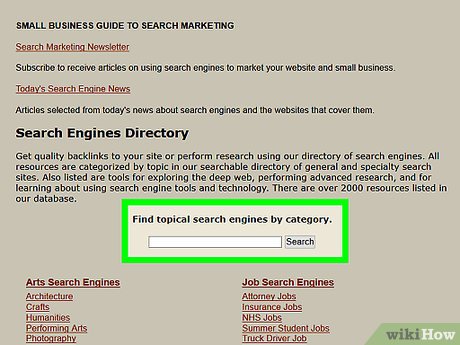
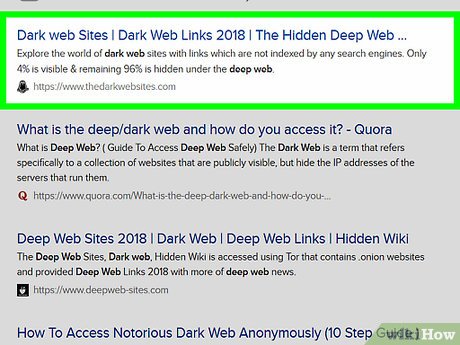

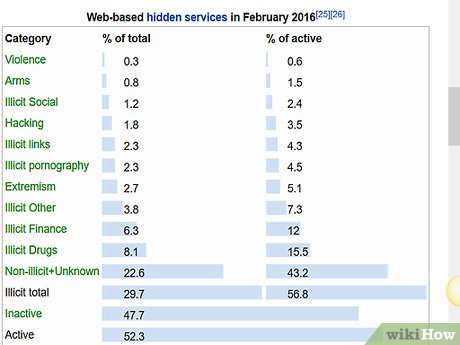

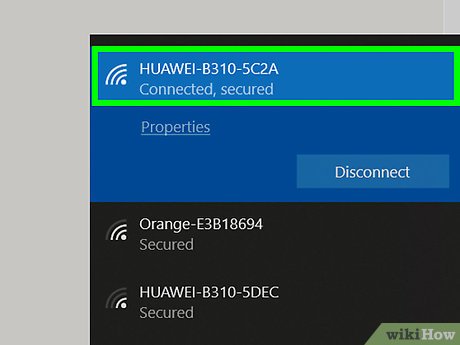
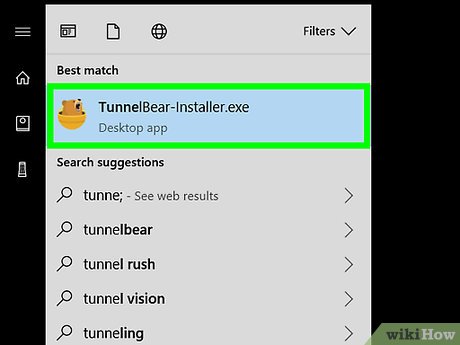

















 How to Put a Shortcut to a Website on Your Desktop
How to Put a Shortcut to a Website on Your Desktop How to Activate Incognito Mode
How to Activate Incognito Mode How to Search and Find About Someone Using Image Easily
How to Search and Find About Someone Using Image Easily How to Fix DNS Server Not Responding Problem
How to Fix DNS Server Not Responding Problem How to Celebrate OneWebDay
How to Celebrate OneWebDay How to Effectively Use Internet Time
How to Effectively Use Internet Time